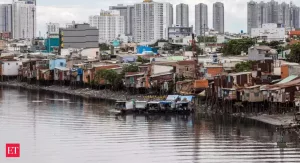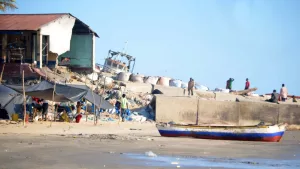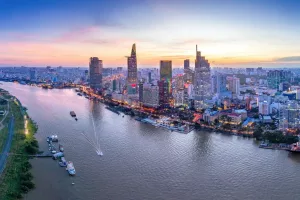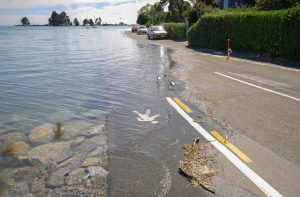Uneducated Reclamation
 Credit The Economic Times
Credit The Economic Times
It may be astonishing for some to know that 44 of the 48 world’s large populated coastal cities are sinking at a rapid pace than the sea level is rising. Such sinking is attributed to groundwater pumping and sediment compacted soil from heavy building and large construction projects being the impact of local land subsidence as well as river delta sedimentation near the estuaries. Excessive groundwater pumping causes aquifers to collapse as the underground water holding capacity of the area is compromised. In coastal settlements of Beira , on the Mozambique Channel ,seas have become violent and surges into settled areas. Same has been reported on the Western coast of Karachi Port wherein swathes of coastal sediments are flooded in monsoon.
 Credit AlJazeera
Credit AlJazeera
Blue carbon
 Credit Al Jazeera
Credit Al Jazeera
Maritime countries like Panama , termed carbon negative , have assigned aggressive goals for ocean conservation.Blue or carbon negative is a feature where there is an abundance of mangroves forests. Along the coasts of Pakistan and Mozambique mangroves are being systematically decimated and ocean swells are wreaking havoc. Conscious of nationally determined contributions (NDC’s) prescribed under the Paris Climate Agreement targets are typically assigned to mitigate the deleterious effects of greenhouse-gas emissions. To achieve its NDC Lisbon is establishing an Ocean Campus in its port area designed to be a scientific , AI hub and a “Blue Business School”.
COP’s and SDGs
 Credit New Scientist
Credit New Scientist
At the Conference of Parties (COP 21) held in Paris in the year 2015 the parties to the United Nations Framework Convention on Climate Change (UNFCCC) agreed to accelerate and catalyze actions toward the investments needed for a sustainable low carbon future and to limit global warming to below 2°C and attempt to limit this further to 1.5°C . The COP 9 held in the year 2018 in Mombasa empathized role of Sustainable Development Goal (SDG) 11 which focuses on making cities and human settlements inclusive, safe, resilient and sustainable and is integral to the UN Habitat Strategy to counter the damaging impact of rapid urban sprawls on coastal areas. In a specific urban perspective the sustainability of coastal cities are guided by SDG 6 concerning clean water and sanitation as more then 80 % of wastewater is disposed into the seas without appropriate treatment . Globally sewerage treatment authorities dispose 5.9 trillion gallons of sewage into coastal waters with an estimated 160,000 factories disposing around 57,000 tons of toxic organic chemicals and 68,000 tons of toxic metals each year. The SDG 13 on climate action aimed to mobilize about $ 200 billion by 2020 to address the needs of developing countries to respond to climate change and low carbon development. SDG 14 relates to life below water aimed at conserving and sustainably using the oceans and marine resources . Coastal ecosystems , including coral reefs ,act as buffers and reduce damage and silt deposition in navigational channels during sea surges. Cutting of mangroves blocks drainage from spillways and estuaries into the sea.Ports and their contiguous estate pose significant challenges to marine ecosystems due to fuel and ballast water discharges as well as uneducated land reclamation.
Evolving Blue Economy
 Credit Discover Magazine
Credit Discover Magazine
The first high level international Sustainable Blue Economy Conference took place in Kenya in the year 2018 to ensure environmental sustainability of oceans to prevent sinking coastal cities like Miami to turn into “stranded assets” leading to a real estate melt down. Miami is encountering tides rising at a high rate each year and the residents continue to live in denial.
By Nadir Mumtaz

Leave A Comment